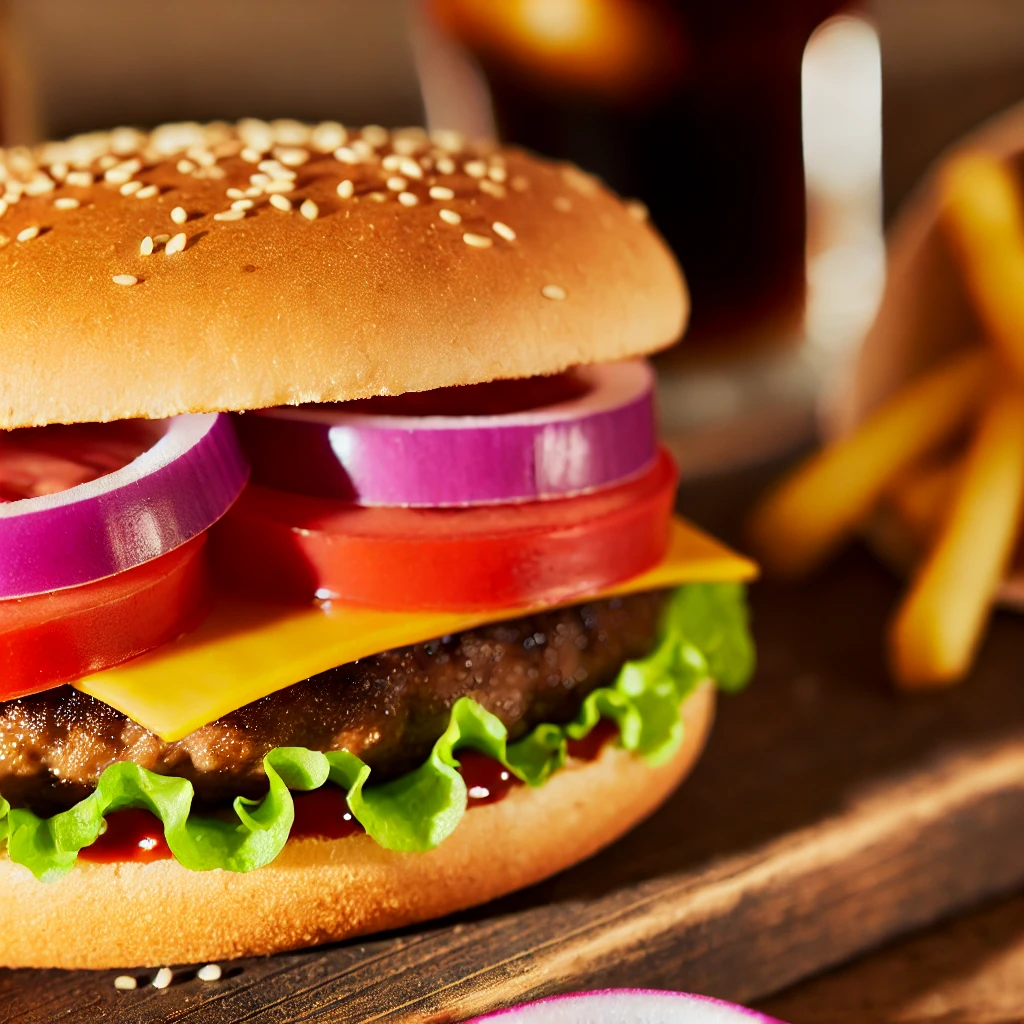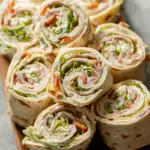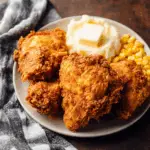When it comes to iconic American cuisine, few dishes can rival the classic burger. It’s a symbol of comfort, a staple of backyard barbecues, and a versatile meal that has been embraced by cultures worldwide. But what makes a burger truly classic? Is it the simplicity of the ingredients, the method of preparation, or the way it brings people together? In this blog post, we’ll explore the history, key components, cooking techniques, and variations of the classic burger. Whether you’re a seasoned burger enthusiast or a curious beginner, this guide will provide you with everything you need to know to create and enjoy the perfect classic burger.
A Brief History of the Classic Burger
The hamburger, as we know it today, has a rich history that dates back over a century. While the exact origins are debated, it’s widely accepted that the modern hamburger emerged in the United States in the late 19th or early 20th century.
The story begins with the influx of German immigrants to the United States in the 19th century, who brought with them a dish known as the Hamburg steak. This dish consisted of minced beef, often seasoned and cooked, then served as a patty without a bun. It was a popular dish in Hamburg, Germany, hence the name.
Over time, American innovation and the need for quick, portable meals led to the creation of the hamburger as we know it today. The first claim to the modern hamburger is often attributed to Charlie Nagreen, who, in 1885 at a fair in Seymour, Wisconsin, allegedly served a meatball flattened into a patty between two slices of bread. However, Louis Lassen, a Danish immigrant, is also credited with serving the first hamburger in New Haven, Connecticut, in 1900.
Regardless of its exact origin, the hamburger quickly became a staple of American cuisine. By the 1920s, with the advent of White Castle and other fast-food chains, the burger had solidified its place in American culture. The classic burger—a simple beef patty, often served with lettuce, tomato, onion, pickles, and a slice of cheese on a soft bun—remains a beloved dish to this day.
The Essential Components of a Classic Burger
To create a classic burger, it’s important to focus on quality ingredients and balance. Here are the essential components that make up a perfect burger:
1. The Beef Patty
The heart of any burger is the beef patty. The best burgers are made from ground beef with a high-fat content, usually around 80/20 (80% lean meat to 20% fat). The fat is essential for flavor and juiciness. When forming your patty, avoid overworking the meat, as this can result in a dense, tough texture. Instead, gently shape the meat into a patty that’s about ¾ inch thick and slightly larger than the bun, as it will shrink when cooked.
Season the patty generously with salt and pepper just before cooking. Some purists argue that these are the only seasonings a classic burger needs, but others may choose to add a touch of garlic powder, onion powder, or Worcestershire sauce for added flavor.
2. The Bun
The bun is more than just a vessel for the patty; it’s a crucial element that contributes to the overall experience. A good burger bun should be soft yet sturdy enough to hold up to the juicy patty and toppings. The classic choice is a sesame seed bun, but brioche buns have become increasingly popular for their slight sweetness and richness.
To enhance the bun’s flavor and texture, lightly toast it on the grill or in a skillet with a bit of butter. This adds a satisfying crunch and helps prevent the bun from becoming soggy from the burger’s juices.
3. The Cheese
While not every classic burger includes cheese, a cheeseburger is a beloved variation that deserves mention. American cheese is the traditional choice due to its meltability and mild flavor that complements the beef without overpowering it. If you prefer a stronger flavor, cheddar, Swiss, or provolone are excellent alternatives.
To achieve that perfect melt, place the cheese slice on the patty during the last minute of cooking and cover it with a lid or a metal bowl to trap the heat.
4. The Toppings
The classic burger is known for its simple yet satisfying toppings, which typically include lettuce, tomato, onion, and pickles. Each adds its own unique texture and flavor:
- Lettuce: Crisp and fresh, lettuce adds a pleasant crunch. Iceberg lettuce is the traditional choice, but romaine or butter lettuce can also be used.
- Tomato: A thick, juicy slice of ripe tomato adds a burst of freshness and acidity. Be sure to use tomatoes that are in season for the best flavor.
- Onion: Sliced raw onions provide a sharp bite that contrasts nicely with the rich beef. Red onions are often preferred for their color and milder flavor, but white or yellow onions work well too. If raw onions are too strong for your taste, try caramelizing them for a sweeter, more mellow flavor.
- Pickles: Dill pickles add a tangy crunch that cuts through the richness of the beef and cheese. They’re an essential component of the classic burger experience.
5. The Condiments
Condiments are where personal preferences come into play. The classic burger is typically dressed with ketchup, mustard, and mayonnaise. These condiments provide a balance of sweetness, tanginess, and creaminess that complements the other ingredients. Some variations might include special sauces, barbecue sauce, or even a touch of hot sauce for extra kick.
Cooking Techniques: How to Perfectly Cook a Classic Burger
Now that we’ve covered the essential components, let’s dive into the cooking process. There are several methods for cooking a burger, each with its own merits. The key is to achieve a perfect sear on the outside while keeping the inside juicy and flavorful.
1. Grilling
Grilling is perhaps the most popular method for cooking burgers, especially during the summer months. The high heat of the grill creates a flavorful crust on the outside of the patty, while the smoky flavor adds an extra layer of deliciousness.
To grill a perfect burger:
- Preheat the grill to high heat.
- Season the patties with salt and pepper.
- Place the patties on the grill and cook for about 4-5 minutes on each side for medium doneness. Avoid pressing down on the patties with a spatula, as this will squeeze out the juices.
- If you’re adding cheese, place it on the patties during the last minute of cooking and close the grill lid to melt it.
- Let the patties rest for a few minutes before assembling the burger.
2. Pan-Frying
Pan-frying is an excellent alternative to grilling, especially if you don’t have access to a grill. A cast-iron skillet is ideal for this method, as it retains heat well and helps create a great sear.
To pan-fry a perfect burger:
- Heat the skillet over medium-high heat.
- Add a small amount of oil to the pan.
- Season the patties with salt and pepper.
- Cook the patties for about 4-5 minutes on each side, just as you would on a grill.
- Add the cheese during the last minute and cover the skillet with a lid to melt it.
3. Broiling
Broiling is another method that can be used if you don’t have a grill. It mimics the high, direct heat of grilling, allowing you to achieve a similar result.
To broil a perfect burger:
- Preheat your broiler and place the oven rack about 4 inches from the heat source.
- Place the patties on a broiler pan.
- Broil the patties for about 4-5 minutes on each side.
- Add cheese during the last minute and let it melt under the broiler.
Building and Serving the Classic Burger
Once your patties are cooked and your toppings are prepared, it’s time to assemble your burger. Start with the bottom bun, and then layer on your patty with the melted cheese. Follow with the lettuce, tomato, onion, and pickles. Add a generous squirt of ketchup, mustard, and mayonnaise to the top bun, then place it on top of the stack.
To serve, you can pair your classic burger with a side of fries, onion rings, or a crisp salad. For an authentic diner experience, a cold soda or a milkshake makes the perfect accompaniment.
Variations on the Classic Burger
While the classic burger is a beloved favorite, it also serves as a canvas for countless variations. Here are a few ideas to inspire your next burger creation:
- Bacon Cheeseburger: Add crispy bacon strips to the classic cheeseburger for an extra layer of smoky flavor and crunch.
- Mushroom Swiss Burger: Top your burger with sautéed mushrooms and Swiss cheese for a rich, savory twist.
- BBQ Burger: Swap out the ketchup and mustard for barbecue sauce and add crispy onion rings for a smoky, sweet flavor.
- Blue Cheese Burger: Replace the American cheese with blue cheese and add caramelized onions for a gourmet touch.
- Veggie Burger: For a meatless option, substitute the beef patty with a veggie patty made from black beans, lentils, or mushrooms. Top with all the classic fixings for a satisfying vegetarian meal.
Conclusion
The classic burger is more than just a meal; it’s a culinary icon that represents comfort, tradition, and the joy of good food shared with others. Whether you’re grilling in the backyard, cooking on the stovetop, or trying out new variations, the classic burger offers endless possibilities for creativity and enjoyment







